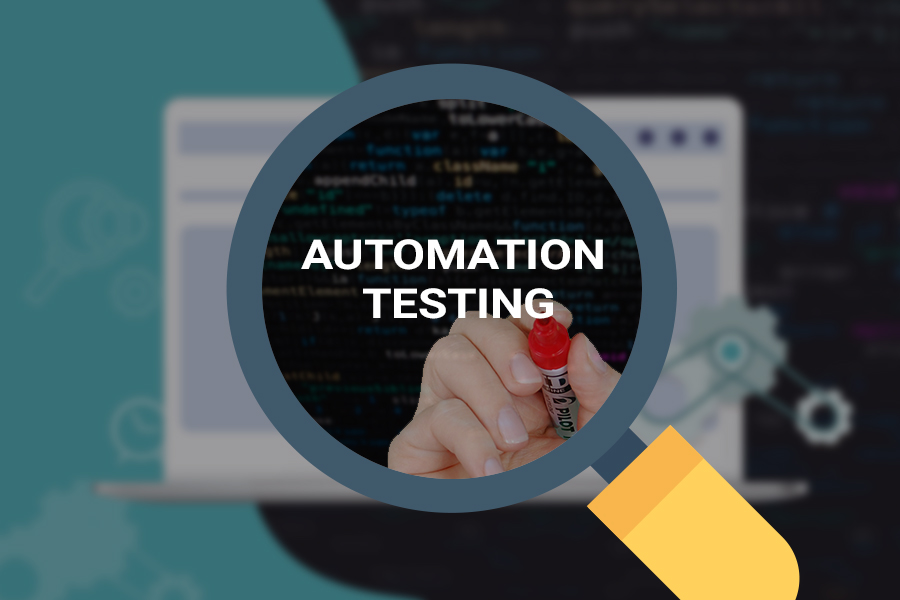From Handbook to Automated Screening: A Comprehensive Overview to Transitioning Efficiently and Successfully
In the realm of software program testing, the change from handbook to automated processes has come to be an increasingly vital change for companies seeking to enhance effectiveness and precision in their testing techniques. The journey from handbook to automated screening is not without its challenges, but when come close to strategically and with a clear plan in mind, the advantages can be considerable.
Advantages of Automated Checking
Automated testing provides various benefits, improving efficiency and accuracy in software application development procedures. Automated examinations can be run concurrently on numerous devices and running systems, dramatically speeding up the screening stage contrasted to hands-on testing.
Furthermore, automated screening makes certain a greater degree of precision in identifying flaws. Consistency in screening is additionally improved, as automated tests implement the exact same steps specifically each time they are run.
Selecting the Right Devices

First of all, evaluate your purposes and needs. Comprehend the range of your job, the technologies involved, and the skill set of your group. This evaluation will certainly help you figure out the features and capacities you need in your testing devices.
Second of all, think about the compatibility of the tools with your existing systems and processes. Smooth combination with your existing software application advancement lifecycle is vital to guarantee a smooth transition to automation.
Furthermore, assess the scalability and versatility of the tools. As your screening requires advance, the devices ought to have the ability to adapt and accommodate changes properly.
Lastly, aspect in the assistance and neighborhood around the devices. When applying automated testing, durable support and an active individual community can supply important resources and aid. By carefully thinking about these aspects, you can select the right tools that straighten with your demands and set the phase for a successful change to automated testing.
Creating Efficient Test Scripts

When crafting test manuscripts, it is crucial to think about the specific requirements of the software application being examined and ensure that the manuscripts resolve all critical functionalities. Clear and descriptive naming conventions for test manuscripts and examination cases can improve readability and maintainability. Furthermore, including error handling mechanisms within the examination manuscripts can help in identifying and addressing issues quickly.
Moreover, organizing examination scripts right into modular elements can improve reusability and scalability, minimizing redundancy and boosting performance in examination manuscript upkeep. Routine evaluations and updates to check scripts are vital to equal advancing software needs and capabilities. By following these principles, testers can produce robust and effective test scripts that contribute substantially to the success of automated screening procedures.
Integrating Automation Into Workflows
Effective assimilation of automation devices right into existing process enhances processes and enhances productivity within software growth cycles. When integrating automation right into operations, it is vital to determine recurring jobs that can be automated to conserve time and reduce human mistake. By perfectly integrating automated screening tools like Selenium or Appium right into the software program growth lifecycle, teams can attain faster comments on code changes, bring about quicker insect discovery and resolution. This integration enables for constant testing throughout the advancement process, making certain that any kind continue reading this of issues are identified early, causing higher software program quality. Additionally, automation can be made use of to activate examinations instantly after each code dedicate, supplying immediate validation and freeing up testers to focus on more complex click here for info scenarios. Correct integration of automation tools needs collaboration between advancement, screening, and procedures groups to develop a unified operations that maximizes efficiency and performance in providing premium software program items.
Making Sure a Smooth Change
Efficiently transitioning to automated testing involves meticulous planning and careful implementation to decrease disturbances and maximize effectiveness in the software advancement procedure - automation testing. To ensure a smooth transition, it is necessary to begin by performing a thorough assessment of the present testing procedures and identifying locations where automation can bring one of the most considerable advantages. Involving with all stakeholders early on in the process, consisting of programmers, testers, and project supervisors, is crucial for garnering support and buy-in for the automation effort
Communication is vital throughout this shift click here to read phase. Clear communication of the goals, advantages, and expectations of automated screening helps to take care of any resistance or issues that may occur. Additionally, giving sufficient training and sources for employee to upskill in automation tools and strategies is vital for guaranteeing an effective shift.

Conclusion
To conclude, transitioning from manual to automated testing provides many benefits, consisting of raised effectiveness and integrity. By choosing the ideal tools, writing effective test manuscripts, and integrating automation effortlessly into workflows, organizations can guarantee a smooth and effective transition. It is vital to embrace automation as an important property in software program screening processes to boost total quality and efficiency.
In the realm of software application testing, the change from handbook to automated processes has ended up being a progressively crucial change for organizations looking for to improve efficiency and precision in their screening practices. Automated examinations can be run concurrently on multiple devices and running systems, considerably speeding up the screening phase compared to hands-on testing. Uniformity in screening is likewise enhanced, as automated examinations execute the very same actions specifically each time they are run.To guarantee the successful execution of selected testing devices, the creation of reliable examination scripts plays a vital role in verifying the performance and performance of automated processes - automation testing. By complying with these concepts, testers can create robust and effective examination manuscripts that add significantly to the success of automated testing processes